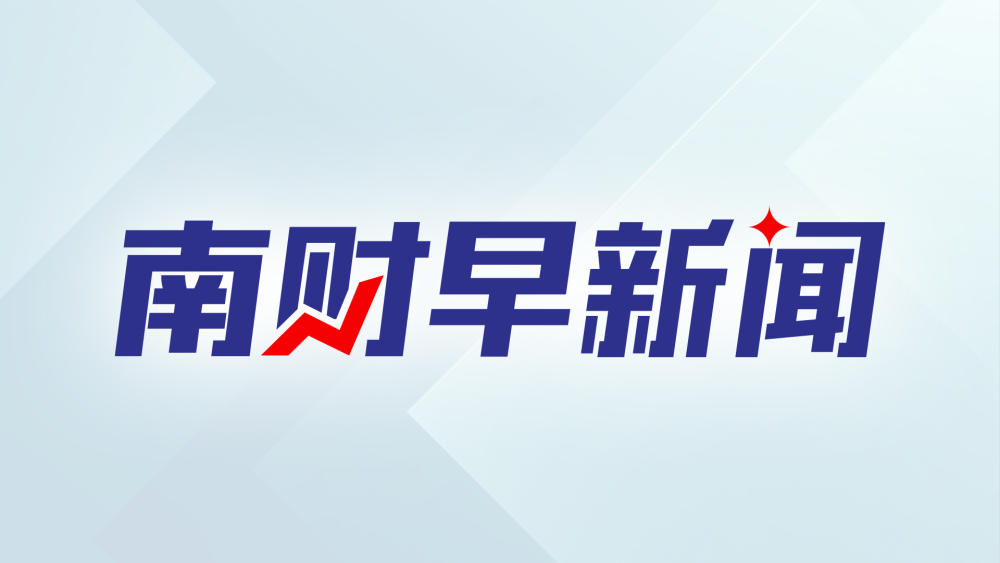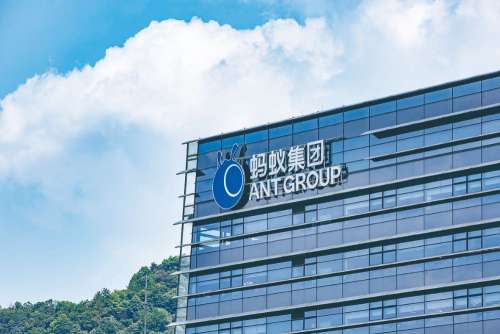On a warm Thursday morning, three ships docked at the terminal at the Nansha port in South China's Guangzhou city, unloading multi-colored containers to a queue of trucks, as the everyday bustle and hustle at the port continues as usual.
Shen Jiayu, deputy director of Business Development of Guangzhou Port Group at the Nansha Port terminal, busily moved among the fleet of trucks and guides the traffic flow through an intercom.
According to Shen, shipping container business of Guangzhou Port Group maintained stable growth in 2022, with the volume of containers exceeding 10 million TEUs for the first time, up by 4.3 percent year-on-year. In February, Guangzhou Port's container throughput was up about 14 percent from a year ago, while cargo throughput jumped 13%.
The buzz at Nansha port, China's fifth-largest port in terms of cargo throughput, offers an unmistakable and resounding sign that mirrors the vigor and resilience of the country's trade sector, amid the backdrop a global economic downturn.
However, as China, the world's largest manufacturing powerhouse, revs up its economic engines after the conclusion of the Spring Festival holidays, certain Western doomsayers have been making kneejerk exaggerations about headwinds faced by China's foreign trade, citing "piled containers" as indicative of overseas order freeze that could cloud the growth prospect of the world's second-largest economy this year.
The increasing number of empty containers is a result of the excessive containers which were released to the market previously, the low cost of storing containers at Chinese ports, and the quick short-term return of empty containers after the easing of COVID-19 pandemic in the world, Yu Jianhua, head of the General Administration of Customs (GAC) told a press conference on Monday.
“The growing number of empty containers piling at the ports reflected that the global market remains optimistic about China's export capacity,” Yu said.
The number of containers for export has been rising since late February, Yu added, addressing recent reports of empty containers piled at Chinese ports that have sparked concerns over trade.
Yu’s points are echoed by industry insiders, as the idle containers at the port are just part of a "normal market adjustment" as there has been a glut in containers at the port after global supply chains saw a return to normalcy at the beginning of the year.
In Ningbo's Zhoushan port, the world's largest port in terms of annual throughput in East China's Zhejiang Province, empty containers are kept within a "reasonable level" and do not affect the normal operation of the port, an official of the container center at the port said.
The January-February period is traditionally a slow season in foreign trade, and idle containers are noticeable on the yards outside the terminal. However, the stockpile is totally market-driven, and it has nothing to do with what some media sources claimed was a drastic dip in the export business, the Shandong Port Land-Sea International Logistics Group said.
In the past three years of epidemic outbreak when supply chain was fractured, China had been the key supplier of the world and global shipping companies were all heading toward China to ferry goods, which led to a sudden spike in container demands in the country.
Also, due to skyrocketing shipping rate and lingering port congestion in Europe and the US, most global shipping companies prioritize efficiency to pocket as much profit as possible, choosing to return to China without containers as they cannot wait the lengthy time of containers offloading and reloading, which also exacerbated the container supply shortage. As such, containers were churning out in bulk to meet the soaring demands.
As global production stabilizes this year, it is reasonable that containers are oversupplied, and some of them return to Chinese ports this year based on universal shipping rules, as China is the place where vast container vessels departed.
Also, compared with fees charged by ports in Europe and the US in placing idle containers, those at Chinese ports are more "competitive" in prices and some of them also provide additional discounts if the cargo throughput of shipping firms "reaches a certain level," another draw to shipping companies.
Meanwhile, trade connectivity between China and Southeast Asian economies has been maintaining steady growth momentum in 2023, about a year after the implementation of the RCEP trade agreement, with fresh port data mirroring a deeply integrated industrial chain among Asian countries and an increasing pivotal role China plays in facilitating an orderly global supply chain.
Betting on the potential opportunity, shipping and port companies have been mulling over plans to open more customized sea freight routes, and Southeast Asia conspicuously is a focus this year
For example, Qingdao port has opened about 100 shipping routes with Southeast Asia to date out of the total 220 routes, as the Southeast Asian bloc is now the biggest trading partner of Qingdao port with 20 percent of market share, a vivid display of the irreplaceable position China plays in global supply chains - buoyed by its extensive rail and sea network, its manufacturing prowess and a price edge.
The rise was in line with a broad expansion in China's trade with other RCEP members. In 2022, the trade value reached 12.95 trillion yuan ($1.88 trillion), up 7.5 percent year-on-year, accounting for 30.8 percent of China's total foreign trade, according to data from the Ministry of Commerce.
Faced with softening external demand, geopolitical and economic shocks and fierce competition from countries such as Vietnam and India in the area of low-end production over the past three years, Chinese export industry did not just sit idle. Business owners and local commerce officials have been taking the initiative in expanding businesses, flying around the global to look for new business opportunities, as soon as China eased its Covid curbs on outbound travels late last year.
Chinese manufacturers — especially those from coastal provinces such as Jiangsu, Zhejiang, Fujian and Guangdong — have been boosting their presence at international expos and expanding market channels in emerging markets to drive sales overseas this year.
For instance, Jiangsu plans to support its exporters in participating in 206 overseas business exhibitions, including the International Sourcing Expo (Australia) in Sydney in July and Manufacturing World Osaka in Japan in October this year.
To help its companies seize more orders in overseas markets, the government of Wenzhou, an export hub in Zhejiang, is offering subsidies to encourage its companies to take part in overseas trade fairs this year. It has set a goal to help more than 300 exporters participate in more than 50 exhibitions abroad in the first quarter.
Authorities in Shandong, as well as other major manufacturing bases, have also been organizing chartered flights to Southeast Asia, Europe, Japan and South Korea since late December 2022, helping local foreign trading firms snap up more overseas orders. Such trips have achieved fruitful results.
While reaching out for new deals, some export-oriented firms are working on upgrading their own competitiveness by moving upstream of the supply chain.
Liu Jianbo, chairman of Dongguan Yaqi Clothing Co., LTD., said that the current clothing export accounts for 30 percent of the company’s orders, and the focus of the company's main business has been transformed into an international OEM providing supply chain services and management, that is, from commodity design to production and manufacturing, quality control, logistics and transportation to cooperate with international brands.
Liu said that the company's export business is now focusing on developing high-end manufacturing products, as well as supply chain services for cross-border e-commerce companies. "Under the business innovation, the export order volume in the first quarter of this year is relatively stable,” he said.
Export-oriented firms that are facing problems are often those in the lower-end of the industrial chain, industry insiders pointed out, and the competition will then force them to carry out technological upgrades.
Throughout 2023, Chinese port authorities and traders have acknowledged immense downward pressure, yet they all voice optimism about the future, vowing a "full-throttle mode" that analysts said is set to channel a new dynamic to propel global growth.
Despite the external challenges and complex factors, China has retained its overall competitiveness in foreign trade, and China's economy is expected to regain impetus this year which will aid trade, said Yu, adding that the GAC is confident in achieving the set trade target for 2023.
空箱堆港,外贸出口遇冷?外贸订单外迁东南亚?近期,关于中国外贸水温高低众说纷纭。2023年开局,中国外贸迎来哪些新变化?海关部门及业内对此现象相继做出了回应。
对此,海关总署署长俞建华3月20日回应称,空箱的问题,有前一个时期新集装箱投放量过大、国内堆存成本较低、国外疫情缓解后空箱短期大量回流的原因,也有季节性规律作用。
俞建华指出,“大量空箱在我国港口蓄势待发,某种程度上也反映了国际市场依然看好我们下一阶段的出口能力。”从海关最新数据看,2月下旬以来,出口用箱量在持续增长。按周监测,2月以来进出口明显回稳,2月最后一周比前一周环比增长超过15%。
3月21日,阿里巴巴国际站总裁张阔在三月新贸节沟通会上也解释了“空箱堆积”的原因。
张阔表示,运力空置或者空箱堆港,其实是对过去疫情期运力昂贵、大造船多造箱的正常调整,本身也是回归运力正常区间的过渡阶段。正常情况下,一个标准集装箱从上海到洛杉矶的海运价格在一千到两千美金,疫情期2万美金本身不是一个正常状态。疫情期间投放了大量的箱子和船,他们正好在2023年下水、运力空前充沛,又碰到回归正常的消费需求,“这供应和需求的一上一下间,搭配不上,就造成很多外部看到的现象。”张阔讲到。
公开数据显示,2021年,在集装箱海运市场高涨的行情下,全球生产了超过700万标准箱的集装箱,是常规年份的近3倍。如今,港口拥堵、“一箱难求”的时期已经过去,集装箱供应和需求的“一增一减”,造成了现阶段空箱较多。目前,不少国际海运公司也主动将空集装箱调度到中国的港口,以随时相应出口规模的增长。
此外,商务部国际贸易经济合作研究院的专家也表示,港口空箱数量、集装箱运费等等虽然是观测外贸发展趋势的一些指标,但并不是全部指标。对于这些指标的变化,要辩证地看待。
商务部国际贸易经济合作研究院院长顾学明表示,港口空集装箱堆积主要是2021年以来“缺箱”“缺柜”导致的集装箱总量供应过剩。是外贸企业看好中国外贸复苏前景,主动调配的结果。而集装箱运价在疫情后曾屡创新高,现在随着海运市场正常化而开始下跌,这也是运价恢复正常的必然结果。所以这些指标(变化)并不意味着中国的外贸规模会下降。
俞建华表示,海关在密切监测3月以来的外贸发展形势。我们的整体看法是,开局平稳,趋势向好。从规模上看,前两个月出口总值创历史新高,增长0.9%,比预期要好。进出口总值超过6万亿元,这在历史上是第二次。疫情前的同期最高的时候不到5万亿。从构成上看,疫情期间我国率先复工复产,防疫物资和“宅经济”产品出口大幅增长,抬高了外贸基数。我们做了测算,如果剔除“一次性因素”,今年前两个月进出口增长超过10%。从趋势上看,按周监测,2月以来我国外贸进出口明显回稳,2月最后一周比前一周环比增长超过15%。从周边国家情况看,与周边已经公布数据的经济体相比,我国的外贸表现是好的。
他指出,外贸确实面临不少困难和挑战,外需减弱最受大家关注。全球通胀高企,主要经济体增长乏力,对全球贸易构成了持续冲击。世贸组织近期预测,今年一季度全球货物贸易疲软,预计全年仅增长1%。除此之外,一些国家强推“脱钩断链”,地缘政治风险,最近西方一些国家金融市场的波动等对全球贸易环境产生冲击,也是我国外贸促稳提质的外部挑战。
“然而,我们也要看到积极乐观的一面。前两个月,在经营主体方面有更多企业进入外贸领域,海关新备案外贸经营主体4.6万家,说明大家的信心在积聚、恢复。在订单方面,根据我们跟踪监测,新增出口订单金额增长企业比重连续提升。在新动能方面,电动汽车、锂电池、太阳能电池“新三样”合计出口增长六成。大家关注的跨境电商进出口增长15.8%。在贸易多元化方面,我国对“一带一路”沿线国家进出口增长超过10%,对RCEP其他成员合计进出口增长超过3%,” 俞建华说。
3月9日,21世纪经济报道记者也实地走访了南沙港码头,了解近期广东外贸业一线的现状。记者在广州港南沙港区龙穴岛码头看到,不少载满集装箱的巨轮在此停泊,五颜六色的集装箱层叠堆放,港区码头车来车往,井然有序。虽然每年的这个时候是港航业的传统淡季,但是南沙港区的装卸业务依然繁忙畅旺。
广州港南沙一二期集装箱码头业务拓展部副总监沈佳瑜对21记者表示,2023年以来南沙港生产整体平稳有序,集装箱累计新开3条外贸班轮航线。今年2月,广州港公司集装箱吞吐量同比增长约14%,货物吞吐量同比增长约13%。
沈佳瑜表示,广州港集团2022年全年净增13条外贸班轮航线,其中RCEP航线占比达七成。2022年欧美等主要经济体通胀水平达到历史新高,市场需求疲软的消费市场,导致欧美方向出口重箱量出现严重下滑。
而随着RCEP的各项协定税率落地执行,广州港与RCEP主要成员国之间的进出口贸易往来将实现快速增长,市场存在较大发展潜力。广州港集团持续加强对RCEP市场的营销力度,正是在RCEP航线及箱量持续快速增长的带动下,在外贸集运市场整体低迷的情况下,广州港集团外贸集装箱吞吐量仍实现正增长。
一般而言,一季度往往是全年外贸增长最慢的时期。2月2日,商务部对外贸易司司长李兴乾在新闻发布会上指出,进入2023年,全球经贸形势变得极其严峻,下行压力明显加大。我国外贸领域的主要矛盾,从去年的供应链受阻、履约能力不足,已经转变为当前的外需走弱、订单下降,这是一个重要的变化。
经历了疫情下外贸普涨的企业个体,感受到今年的压力陡升是不争的事实。因此,外贸企业也在积极探索。去年底以来,广东已组织多批企业赴马来西亚、新加坡、印尼等地参加境外展会。广州、东莞、佛山等外贸大市和制造强市也竞相出台利好政策支持企业出海抢单。
在完成首轮“出海抢单”操作后,外贸人仍旧马不停蹄,继续积极“抢单”稳住产业链,激活中国市场的发展活力。春节前后,浙江、江苏、福建、广东等地“出海团”相继出发,他们不仅将接连带回外贸订单,更带来了全球市场持续看好中国复苏的信号。
据了解,去年以来,浙江省全力抢抓新订单、挖掘新增量。仅2022年12月,浙江就有20多个政府和企业团组“走出去”,拿到了意向订单180多亿元。浙江省还开展了“千团万企拓市场抢订单行动”,通过包机、拼机、航班等模式分阶段、分行业组织超1万家企业赴海外参与经贸活动。
不仅是浙江,新春以来,多地都在迅速行动“抢单稳链”。广东、上海、江苏、辽宁等多地在近期部署2023年经济工作时,都将稳外贸、稳外资作为重要目标,争取在2022年稳增长基础上持续提质促优。为进一步帮助粤企开拓多元化国际市场,广东省商务厅已计划于2023年起在境外出口市场打造提升“粤贸全球”广东境外商品展览平台,扩大“广货”全球影响力,相关比选活动近日已启动。
李兴乾指出,商务部已经明确,把强化贸易促进、密切供采对接摆在优先位置来抓,全力支持外贸企业抓订单、拓市场。商务部要面向外贸企业办好这四件事:第一,恢复实体展。落实1月28日国务院常务会议部署,推动国内贸易展会全面恢复线下展,要办好大家比较熟悉的进博会、广交会、中国国际高新技术成果交易会等一系列重点展会。第二,用好新业态。促进这几年快速发展的跨境电商、海外仓等新业态的进一步发展,充分利用数字化手段来挖掘贸易潜力,带动中小微外贸企业出口。第三,发掘新需求。发挥驻外使领馆经商机构的作用,协助各地方组织企业到境外去开展贸易合作。要加强国际细分市场研究,及时共享各国市场的供求信息,帮助企业及时获取外贸订单。第四,支持企业“走出去”。为外贸企业跨境商务往来提供更多便利,支持企业以各种方式推介中国产品、中国制造、中国品牌,支持有条件的地方扩大境外办展规模。

Executive Editor: Sonia YU
Editor: LI Yanxia
Host: Stephanie LI
Writer: Stephanie LI
Sound Editor: Stephanie LI
Graphic Designer: ZHENG Wenjing, LIAO Yuanni
Produced by 21st Century Business Herald Dept. of Overseas News.
Presented by SFC
编委: 于晓娜
策划、编辑:李艳霞
播音:李莹亮
撰稿:李莹亮
音频制作:李莹亮
设计:郑文静、廖苑妮
21世纪经济报道海外部 制作
南方财经全媒体集团 出品




















